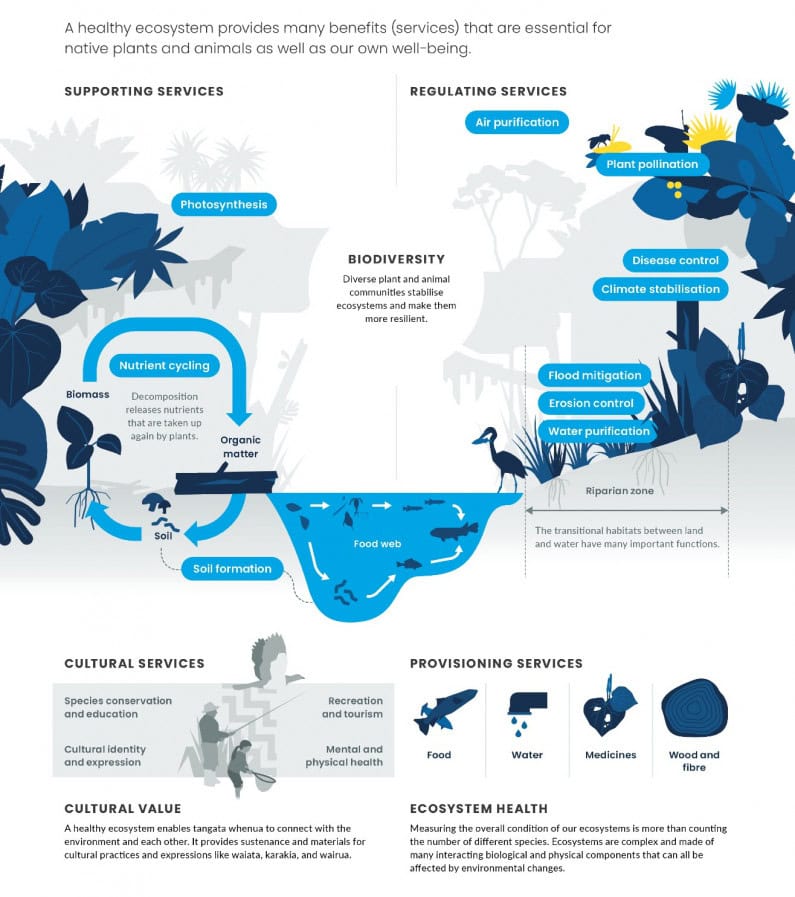An exploration of environmental valuation frameworks and techniques
In the complex realm of environmental policy and decision-making, understanding the value of nature extends far beyond its aesthetic appeal. From the bees that pollinate our crops to the awe-inspiring vistas of untouched landscapes, nature provides a plethora of services essential to human well-being.
Evaluation of trade-offs in allocating resources necessitates an understanding of their economic value. Cost-Benefit Analysis (CBA) serves as a guiding tool for optimal resource allocation, traditionally comparing projected future costs and benefits using market prices. Quantifying nature’s economic value is challenging due to its non-market nature. To address this challenge, economists have developed a suite of environmental valuation frameworks and techniques.
Frameworks
Environmental valuation frameworks serve as conceptual frameworks that organize the complexities of environmental value into distinct categories, facilitating analysis and decision-making processes in environmental management and policy. For example:
Total Economic Value (TEV) Framework: TEV aims to capture the full range of economic, social, and cultural values associated with the environment, providing a comprehensive perspective on its worth. The framework categorizes environmental values into various types, including direct use, indirect use, option and non-use values, as per the following figure:

Ecosystem Services (ES) Framework: The ES framework focuses on the benefits that ecosystems provide to human well-being. From purification services to ecological cycling, habitat provision, and beyond, ecosystems serve as the bedrock upon which countless societal benefits are built. The main service categories include:

- Provisioning services: products obtained from ecosystems (e.g., drinking water, natural gas and timber)
- Regulating services: benefits obtained from regulation of ecosystem processes (e.g., CO2 /O2 balance and O3 for UV protection)
- Cultural services: intangible benefits that contribute to the development and cultural advancement of people (e.g. spiritual and religious, sense of place and ecotourism)
- Supporting services: the processes that allow the Earth to sustain basic life forms and are essential for all other ecosystem services continuity (e.g., photosynthesis and nutrient cycling).1
By highlighting the diverse contributions of ecosystems to human welfare, the ES framework emphasizes the importance of ecosystem conservation and restoration for sustainable development. The following figure shows the ES in the New Zealand natural environment context.

Valuation techniques
Environmental valuation techniques enable economists, researchers, and policymakers to compare the costs and benefits of different environmental management strategies and inform decision-making processes by assigning monetary values to environmental assets and impacts. There are two main types of environmental valuation techniques, namely market and non-market techniques. Market valuation are the more straightforward techniques when the observable prices are available for example for the value of crops and livestock. When the market value is not available the more complex non-market valuation techniques come to play.

In the complex realm of environmental policy and decision-making, understanding the value of nature extends far beyond its aesthetic appeal. From the bees that pollinate our crops to the awe-inspiring vistas of untouched landscapes, nature provides a plethora of services essential to human well-being.
Non-market environmental valuation techniques can be broadly categorized into four main types:
- Revealed Preference Methods: Revealed preference (RP) or surrogate market valuation methods infer environmental values from observed behaviour in real-world markets or contexts. These methods examine how individuals allocate resources or make decisions related to environmental goods and services, for example:
- Travel Cost Method: The travel cost method estimates the economic value of recreational or amenity services provided by natural areas based on the costs individuals incur to visit these sites.
- Hedonic Pricing: Hedonic pricing involves analysing market data, such as property prices, to estimate the implicit value of environmental attributes (e.g., air quality, proximity to parks) that are reflected in market transactions.
- Stated Preference Methods: Stated preference (SP) methods involve directly eliciting individuals’ preferences and values for environmental goods and services through surveys or hypothetical scenarios. These methods seek to capture individuals’ willingness to pay (WTP) for environmental improvements or willingness to accept (WTA) compensation for environmental degradation, for example:
- Contingent Valuation: Contingent valuation involves asking individuals how much they would be willing to pay for a specific environmental improvement or conservation measure, or how much compensation they would require to accept an environmental change. This method relies on hypothetical scenarios to estimate the economic value of environmental assets or changes.
- Choice Experiments: Choice experiments present individuals with a series of alternative scenarios involving different attributes and levels of environmental quality, along with associated costs. Participants are asked to choose their preferred scenario, allowing researchers to quantify the trade-offs individuals are willing to make between different environmental attributes and the monetary value they assign to these attributes.
- Benefit Transfer: In addition to these primary RP and SP techniques, benefit transfer is a method used to apply values derived from existing studies to new contexts, thereby reducing the need for original research and accelerating the valuation process. To support researchers and policymakers in this field, there are several databases available. Below are links to some of them:
- Subjective Well-Being (SWB): In recent years, the emergence of subjective well-being (SWB) as a method of monetary valuation has heralded a paradigm shift in environmental economics. By tapping into individuals’ self-reported measures of personal well-being, SWB transcends traditional assumptions about rationality and preference, offering a holistic perspective on the value of environmental assets. This approach acknowledges the intrinsic connection between nature and human well-being, recognizing that the preservation of natural environments is essential for fostering happiness and fulfilment among individuals.
How do we make better decisions when the environment is at stake?
Sapere applies robust environmental valuation techniques to help governments, communities, and businesses understand the true value of natural assets and ecosystems. Talk to us about how we can support your policy, investment, or regulatory decisions with credible, defensible valuation advice.
References
- Millenium Ecosystem Assessment- Ecosystems and Human Well-being: A Framework for Assessment